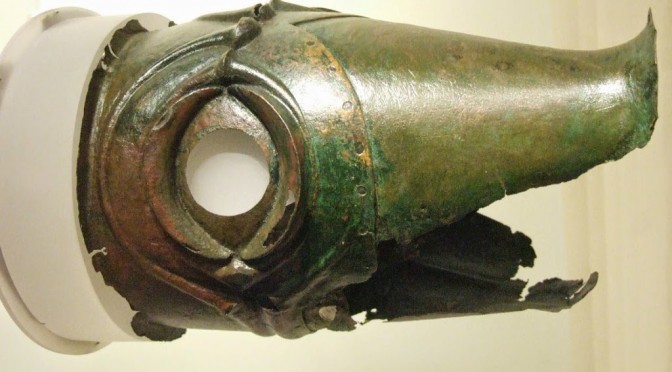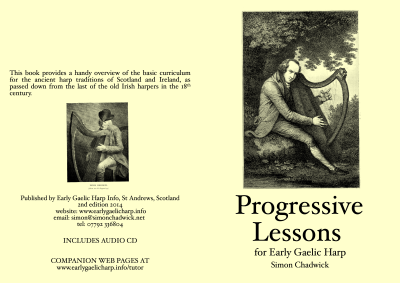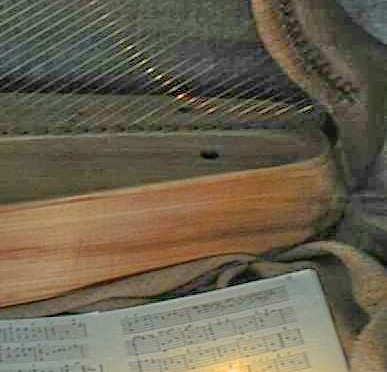When I suggested to the committee of the Friends of Wighton back in the spring, that I could do a gramophone session for one of the regular Wednesday lunchtime concerts in the Wighton Centre in Dundee, I just thought it would be a bit of light-hearted fun, but actually it has become quite a serious task for me! From planning the sides and running order I’ll play, to opening and cleaning and oiling the machine, to reading up on the music so as to have something useful to say during the presentation, it is taking up a lot more time than I expected.
I have been reading some interesting books or at least sections of books. In Scottish Life and Society, A Compendium of Scottish Ethnology, volume 10: Oral Literature and Performance Culture edited by John Beech, Owen Hand, Fiona MacDonald, Mark A. Mulhern and Jeremy Weston, (John Donald in association with the European Ethnological Research Centre and National Museums Scotland, 2007) (phew!), there is a very good chapter by Stuart Eydmann, ‘Diversity and diversification in Scottish music’. Eydman gives as a subtitle ‘Sketches for a Scottish musical-historical map’, and then gives a couple of pages in turn to a half-century or so, starting with “before 1840”, and then progressing, “1840-1900”, “1900-1945” and “post 1945”.
Of course it is the “1900 to 1945” section that is most relevant to the Scottish 78rpm gramophone records, though the late 19th century observations are useful as well. Eydman deals clearly and concisely with the different types of musical activities which different parts of society took part in, including domestic performance on instruments, both working class and ‘bourgeois’, as well as the music hall, one of the most important contexts for the gramophone records.
It seems to me that there were two different backgrounds from which musicians would come forward to produce a gramophone record of “Scottish music” in the teens, twenties and thirties: music hall performers, and “concert artists”, i.e. classical musicians. Harry Lauder is of course the best known music hall artist performing “scots songs”, and on the disc of his I have he is very much playing up all of the negative racial slurs of the Scotsman as a foolish, drunken, untrustworthy figure of fun. Both on this disc and on another, a record of Jock Mills from 1914, there is a similar vocal style, with slighty hysterical-sounding swoops down onto certain stressed notes, and a very curious extended rolled R in the middle or end of many words – I’m not aware of this sound as a part of any Scottish dialect and I assume it is a music-hall comic convention.
Marjory Kennedy-Fraser is the best known “concert artist” in this field. Her “Songs of the Hebrides”, ostensibly arrangements of traditional Gaelic songs, but in reality pretty much newly-composed pastiches, were very popular, and many classical singers specialised in them, such as Joseph Hislop (I have a 1933 disc of him). But other classical musicians turned to what we would consider genuine traditional material, and performed it in a pretty interesting straight classical style, such as Archie Anderson singing “Jock O’Hazeldean” (Walter Scott’s tidying up of a traditional border ballad) in 1914, or Kenneth MacRae singing “Òran Mòr Mhic Leoid” (a Gaelic song composed in the 1690s by Rory Dall Morrison) in 1931. The text is straight, the accompaniment is simple, and the vocal style is the classical norm of its time.
David McCallum was a leading violinist with the Edinburgh symphony orchestras, and you can hear his classical learning on his record (c.1929) with its extensive slow portamento sliding, but he has a lot of very distinctive Scottish fiddle ornaments as well – this is not just a straight classical performance of the tune, such as we hear today from players like Jordi Savall. McCallum very much has a foot in both camps. I almost said if indeed there were two camps then but of course there were, and we can hear the other “traditional” style on the archive recordings. But the old traditional fiddlers would never have made a gramophone record in the 1920s or 30s!
John MacDonald of Inverness on the pipes, playing “Lament for the Children” in 1927, does fit into this model, but perhaps not as obviously as first seems. Obviously he is not a “music hall performer” or indeed a “concert artist” in the classical sense, but his playing style, and the Pìobaireachd Society score he is working from, represent the height of high modernism, to the point that the traditional tune is barely identifiable in his extremely mannered playing.
The use of sliding as an articulation in classical music is a fascinating aspect of performance practice that is almost completely lost today. Robert Philip’s book Performing music in the age of recording (Yale 2004) documents in huge but fascinating detail the changes in performance style which were brought about in the 20s and 30s by the development of recording technology. This book reminds me of why I love the late 20s recordings so much – they are after the invention of electrical recording in 1925, so the sound quality is much better than pre-1925
records, but they are before the big changes in style and presentation which quality recordings drove forward.
I also read Susan Motherway’s paper ‘Mediated music? the impact of recording on Irish traditional song performance’ in the interesting collection Ancestral imprints: Histories of Irish traditional music and dance ed. Thérèse Smith (Cork 2012). Apart from the rather silly pomo writing style of the title and introductary paragraphs, this is a very insightful article that considers commercial recordings of traditional singers from the 1990s on. Apart from the good comments about the way in which different recordings place themselves very differently in the market, I was most struck by the comments about the amount of control that recording and sound engineers now have over the sound and the music of the singers.
It almost seemed reading this article that similar issues dealt with by Phillips for classical music in the 1920s and 30s, are currently playing out in traditional music. Perhaps these things are always playing out to some extent, but I am fascinated by that constant tension between the musician as a performance artist, standing in front of or even better alongside an audience of their peers, and presenting a musical performance as a personal interaction, saying something to the listeners; and the recording as a product, a manufactured good, that is to be kept on a shelf and admired as an artefact.












